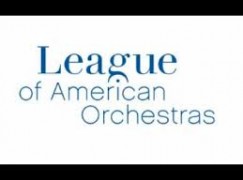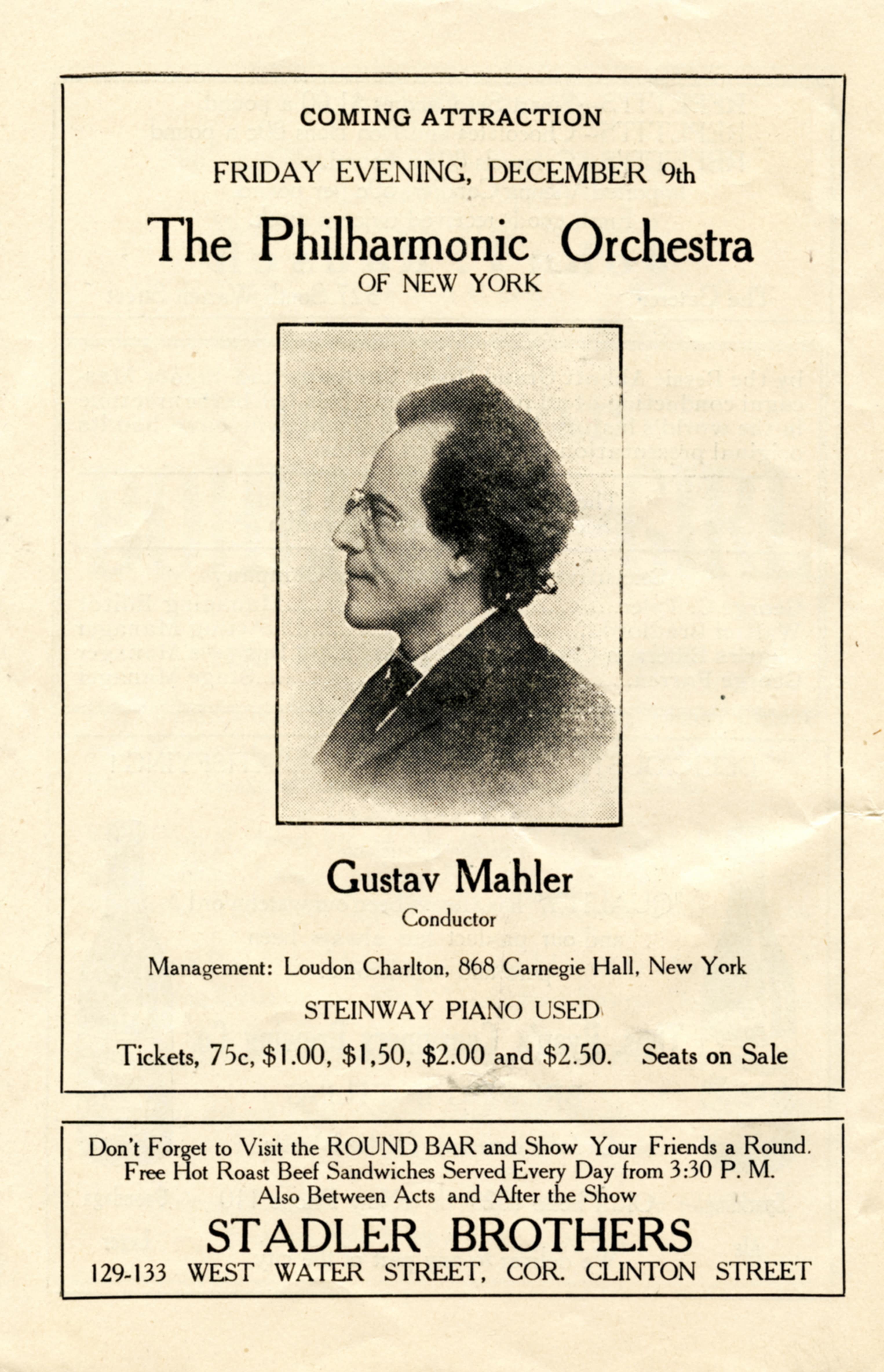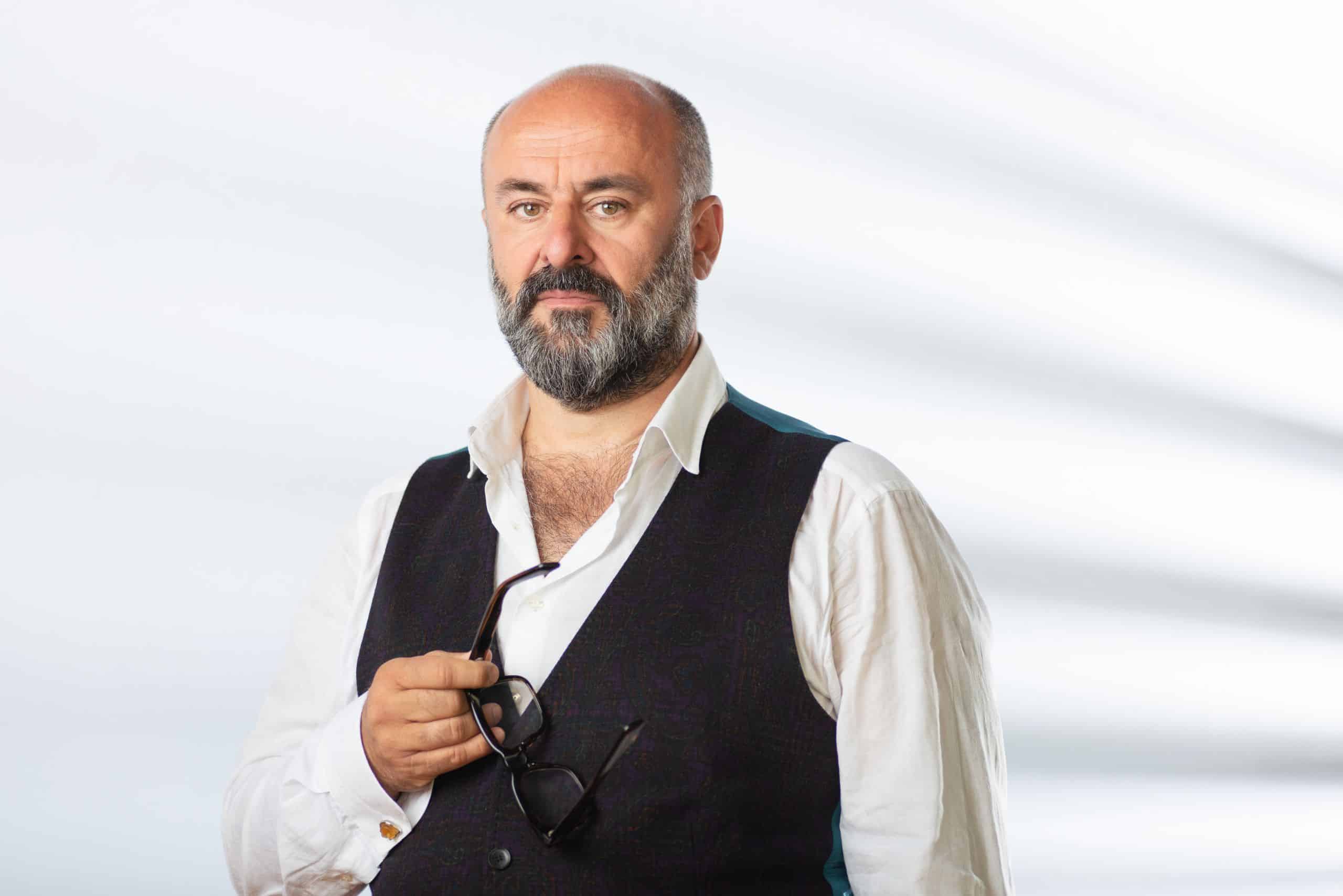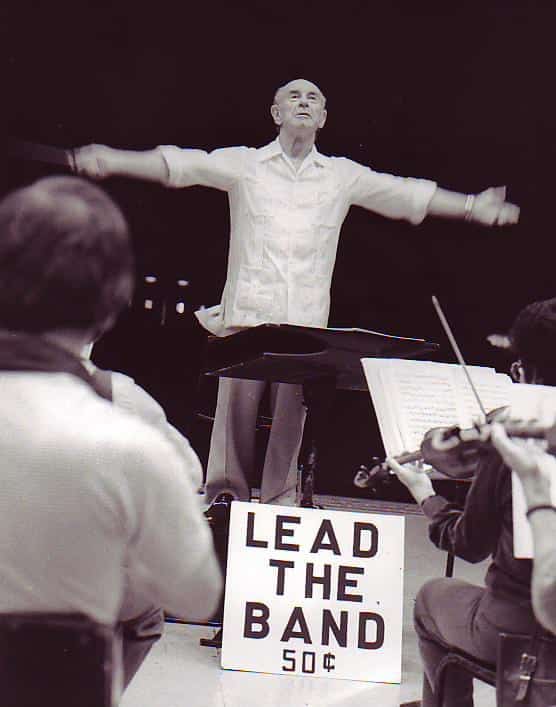Are we happy? LAO, we are…
mainIt is in the nature of trade conferences to see light at the end of tunnels and the world through roseate lenses. People come from all over the world to be reassured that all is well, and they are still in business.
Even from this perspective, however, the opening day of the Cleveland conference of the League of American Orchestras has been magnificently tunnel-visioned.
The opening session contained several joyous affirmations of the glory of orchestral music, how good it is for kids, the benefits to health and society and its ineluctable affinities with motherhood and apple pie.
All difficulties are challenges, all retreats strategic, all financial issues unspoken. Oh happy we who assemble in the halls of great muses. Oh welcome tomorrow, so much better than today.
A cheerleader clicks orchestral credos on a screen above his head. We squint and murmur affirmation.
We look at the clock. It has gone back 30 years.
Tomorrow is … whenever.
We’ll keep you posted.






The tunnel-visioned optimism of America’ classical music community is proverbial. This is also often combined with assertions of greatness that are literally fraudulent, like when the San Diego Opera claimed to be a world class company with only 15 performances per year. We see the so-called Houston Grand Opera with only 50 members in its orchestra. We see the “National Opera” in Washington with barely the equivalent of a six week season.
The question is why? Perhaps it’s related to America’s unique and isolated private funding system. Donors do not want to fund failed institutions. They must be convinced they are supporting success. American arts organization often need bailouts from disastrous conditions, but that too must be promoted as a grand, new rebirth of glory. Self-delusion thus becomes an inherent part of American classical music. Our arts organization literally cannot afford to tell the truth. The LAO thus becomes the League of Amnesia.
William, you have been beating this drum loudly for a long time but I can assure you, 100%, that there is absolutely no clamor, no desire amongst the struggling taxpayers in the USA to pony up even more money for ‘the arts’. Never mind 18 trillion of national debt (just a fraction of the real number), the working folks I rub elbows with every day don’t consider what I do for a living as ‘work’. They laugh at the idea and would go apoplectic at the thought of being forced to subsidize it.
I appreciate your passion and energy but surely you must realize that there is no hope whatever of the public fisc in America being tapped for what is perceived as the playthings of the elite, the ‘1%’. Sorry, ain’t gonna happen.
The first step is to fully acknowledge the low status of the arts in the USA compared to the rest of the world. The second step is to acknowledge that this is mostly the result of our lack of a public funding system like all other developed countries have long had. In short, the only way forward is to gain a sense of reality, which it appears you’d rather not see happen. See below for a more detailed approach.
Ironically, the “working folks” don’t mind having their taxes used to build new stadiums where millionnaires (the players) and billionnaires (the owners) get even richer while they can’t afford game tickets anymore…
Latest example: the new Yankee Stadium.
Perfectly true but perhaps not ironic; people love their football and baseball and can’t get enough of it, Salome not so much…
It’s the politicians and local business people who don’t mind having tax dollars used for this. Half a billion taxpayer dollars for a new stadium for a mediocre team to play eight games a year, but somehow $14million for an orchestra which consistently hits it out of the park and has screaming fans and international publicity is “elitist”. Guess which organization now has a $2500 annual fee just for the privilege of purchasing tickets? Hint: it’s not the orchestra.
Mr. Osborne, you point out all the negative aspects of the American classical system. Any fool can do that. What are the solutions?
Mr. Osborne, you point out all the negative aspects of the American classical music system. Any fool can do that. What are the solutions?
He either has none or isn’t interested in coming up with a plan for realizing the public funding he insists is the only conceivable solution. Everyone wants to go to heaven but nobody wants to die.
It’s a species of pluming, nothing more. When the people who tell me public funding is important start acting like it’s important is when we’ll know it’s important.
Let me give your post a ‘like’. This rather pointless crabbing about the state of classical music is getting rather tiresome. How about proposing some solutions, or sharing some success stories?
To solve our problems we need to move to public funding systems for the arts like all other developed countries have long had. This is close to an impossible task given the narrow political spectrum and dysfunction of the US government even down to municipal levels.
The first steps have to be educational. We need to raise consciousness about how poorly we compare to the rest of the world. And we need to spread more information about how public funding systems in other countries work and why they are much better. Closely linked to these efforts is more information about the essential role of arts education in society. This educational process needs to begin with four specific groups:
1. Arts Journalists
2. Artists
3. Music administrators
4. Music educators.
Even these groups are astoundingly ignorant about the comparatively low status of the arts in the USA, and that this problem is caused by our private funding system. Once these four groups are better informed they will pass on information to the larger public. Knowledge lights the darkness and awareness brings change, even if the process is very slow.
We also need to show these four groups that they do not need to feel hopeless. We can remind them that America is capable a great change over time if it is given a firm vision. We can help these four groups gain that vision. And we can help them understand that they need to stick to a long struggle because that is how most meaningful change–like the ongoing American civil rights movement–is created.
There is a kind of irony in the comments of “John” and “JJC.” There is no fast American-style McAnswer to our arts funding problems. The only solution can be the long-term development of a public funding system administered mostly on the state and municipal levels. We must begin by raising the consciousness of the four key groups I list above.
Recent discussions, however, have led me to believe other more specific groups might be considered, such as NASM and the LAO. The problem is that the LAO, the orchestral world, and many of our most prominent music schools, are deeply invested in keeping wealthy donors happy, many of whom are right wingers who would object to public funding systems for the arts. American arts organizations and their administrators are thus embedded in a system that insures the continued dysfunctionality of the arts in America.
We must push back against the financial elitism of our arts institutions, and their vested interest in maintaining an impoverishing funding system by and for the wealthy. Organizations like the LAO will provide lip service to public funding, but they will never have the integrity to make a full campaign that might help create results until we create a grass-roots change in attitudes. Raising the consciousness of the four groups I list in my previous post are the best avenue to creating that change in consciousness.
Go, given the fact that there will be no significant public funding of the arts in the U.S. anytime soon, what is your Plan B?
A continuance of McInnovation and massive amounts of self-delusion…
In other words, you do not have a Plan B.
Oh, well.
Solutions? What solutions? If the organizations in question are still living in Fantasyland, they’re not really interested in solutions, since there are no problems to begin with. And I think if “any fool” could see these “negative aspects” we wouldn’t be having this conversation.
I’ll probably be in trouble for asking this…but, how many orchestras capable of playing Mahler does one country need? Does every orchestra need 90+ players? Maybe more orchestras need to be smaller, with just a few huge ones for the late romantic classics. Would this be a solution?
Something like that model is already evolving in the USA. Highly funded orchestras are developing residencies in multiple cities by poaching the donor base from orchestras with less funding.
With its residency in Miami, the Cleveland Orchestra even went so far as to become a scab orchestra. After a contentious strike in 2000, the Florida Philharmonic Orchestra was permanently closed due to bankruptcy 2003. At the same time, one of the FPO’s board members, Daniel Lewis (a Cleveland native,) gave the Cleveland Orchestra a $10 million donation, the largest in its history. The $10 million could have kept the FPO going, but it was given to Cleveland instead. The Cleveland Orchestra was then given a permanent residency in Miami.
The Cleveland residency has made it impossible for the musicians of the FPO to reform their orchestra. Cleveland thus became a scab orchestra. The details of this sordid history are here:
http://en.wikipedia.org/wiki/Florida_Philharmonic_Orchestra
I’ve noticed that numerous arts administrators are now talking about the Cleveland scab model becoming a new norm to help the big orchestras survive. If this happens it will be a large blow to classical music in America, because culture is by nature inherently local and locally based. Instead of over-looking these events, the Cleveland Scab Orchestra In Miami should become a by-word in the classical music community.
You said it yourself Mr. Osborne: “culture is inherently local”
WHY THE HELL then should one play Mahler in America? In Topeka? In Sioux Falls? In TeXarkana?
Who determines what is culture, you? In my mind, what is happening in classical music is a textbook example of the invisible hand of market forces shaping a much leaner offer which should have not grown in the first place.
Yes, you will talk about Orchestras per capita in Germany. But hey, you know where they also “beat” the US? In sauerkrout consumption per capita, in beer consumption per capita, and in horse meat consumption per capita. Should the government fund those too? Is that what a “cultured” country is, to make the world look more like Europe?
What is happening here is a simple demonstration that sifferent countries have different values, and theres nothing wrong with that. The US still has many of the greatest orchestras in the world, and the more they consolidate their presence the better will they be able to further the artform via comissions and challenging programing not meant to be a commercial success. Meanwhile, the smaller ones will continue to engage pop acts like the texas tenors or the soon to come honkeytonk at the symphony in order to survive.
You have one of two options. Either have 5 great orchestras that actually play classical music, or have 300 that play pops. I choose option one.
To think that government money will help indoctrinate 300 million people to appreciate Mahler is delusional.
Yes, there are those who tell us America’s true culture has to be something like washtub basses and banjos. In reality, we share the values of Western culture as much as any European country. In the 20th century we even sacrificed hundreds of thousands of lives to save those values from totalitarian ideologies bent on their destruction. As a democracy, we have the obligation to make our heritage a part of all of our communities. In fact, the only way for America to fully realize its own unique identity is to build upon our heritage, of which European culture is a central part.
If we really share the values, consciously or unconsciously, its clearly not being demonstrated by the engagement of the population with the established art forms. Its also a matter of demographics: What’s the European linkage from the millions of African Americans who came directly from Africa, not Europe, to the USA? Maybe what you mean is that the elites that rule this democracy are those most related to this culture, which makes complete sense when one sees where the ‘top’ ensembles exist: Boston, NYC, Washington, Philadelphia, etc. I think that in order to preserve and continue that art form, it should stay that way. Some people are as likely to enjoy Mahler as you are likely to enjoy the Corridos that populate the Chicano/Mexican radios. Both very valid art forms by the way.
The United States does not have a single cultural background, and in fact I ponder that what makes this country great is its ability to welcome cultures with open arms. We also fought the war in the East – so why don’t we see advocacy to ‘preserve’ japanese Gagaku, or to form Gagaku operas across the nation?
The idea that people should be limited to music defined by their ethnicity is, of course, absurd, and possibly even racist. Good music education and arts funding covers all these musics. From about 1960 to 2000, the Europeans probably did more to support jazz than America. One concrete example is that most of the videos we have a jazz greats during that period come from European state broadcasters.
Funny how this Miami thing had some questionable Board contributions AND the “management” of Bruce Coppock, who now claims that his much-reduced, shadow-of-its-former-self St. Paul Chamber Orchestra, isn’t really an “orchestra” but instead a bunch of chamber musicians who play orchestra pieces. Hopefully more stakeholders will be more aware of things like this.
Well, if you’re suggesting the Colorado Symphony should have forty musicians and perform only Haydn and Mozart, and if I want to hear Mahler, catch a flight to Chicago or Los Angeles, I’m not so sure that would be a trend that would be likely to evolve.
If, on the other hand, an orchestra like the Colorado Symphony carries 70 or so regular members and hires on local pros they regularly work with in order to do Belshazzar’s Feast (as they did last weekend), that’s a solution that’s already being utilized.
I do think there will be some kind of shaking out over the years to come, and that the truly viable institutions will survive and others will either not survive, or evolve into something else (pops orchestras, etc.). The path that took us to this point probably goes back at least 150 years, and it’s multi-faceted and very complex. I think that the current state of classical music was probably inevitable. Orchestras perform the music they were created to perform. Putting them in slacks and shirts and letting the audience sip wine really won’t alter what people hear when they go to an orchestra concert. That doesn’t mean that these institutions shouldn’t continue to find relevance in a greatly changed landscape, but I’d be willing to predict that superficial ‘solutions’ like these will do much to rebuild interest in their brand now that we’re here in the 21st century.